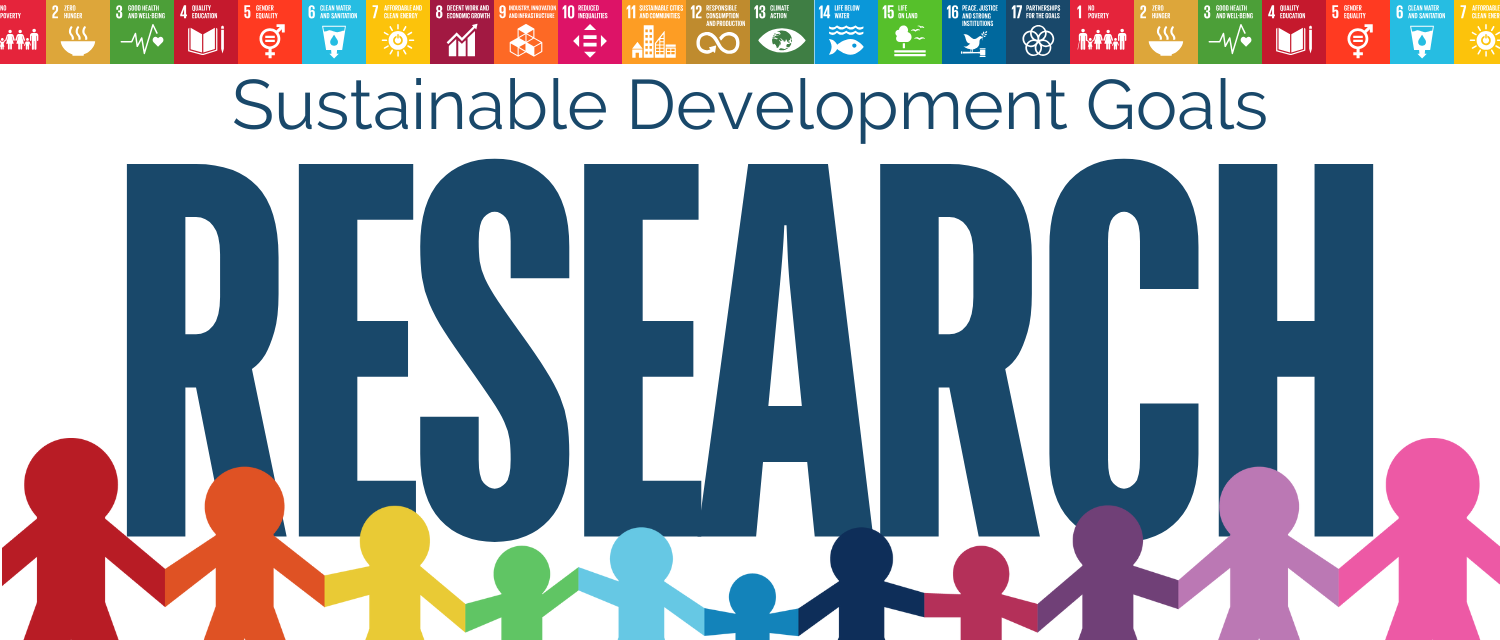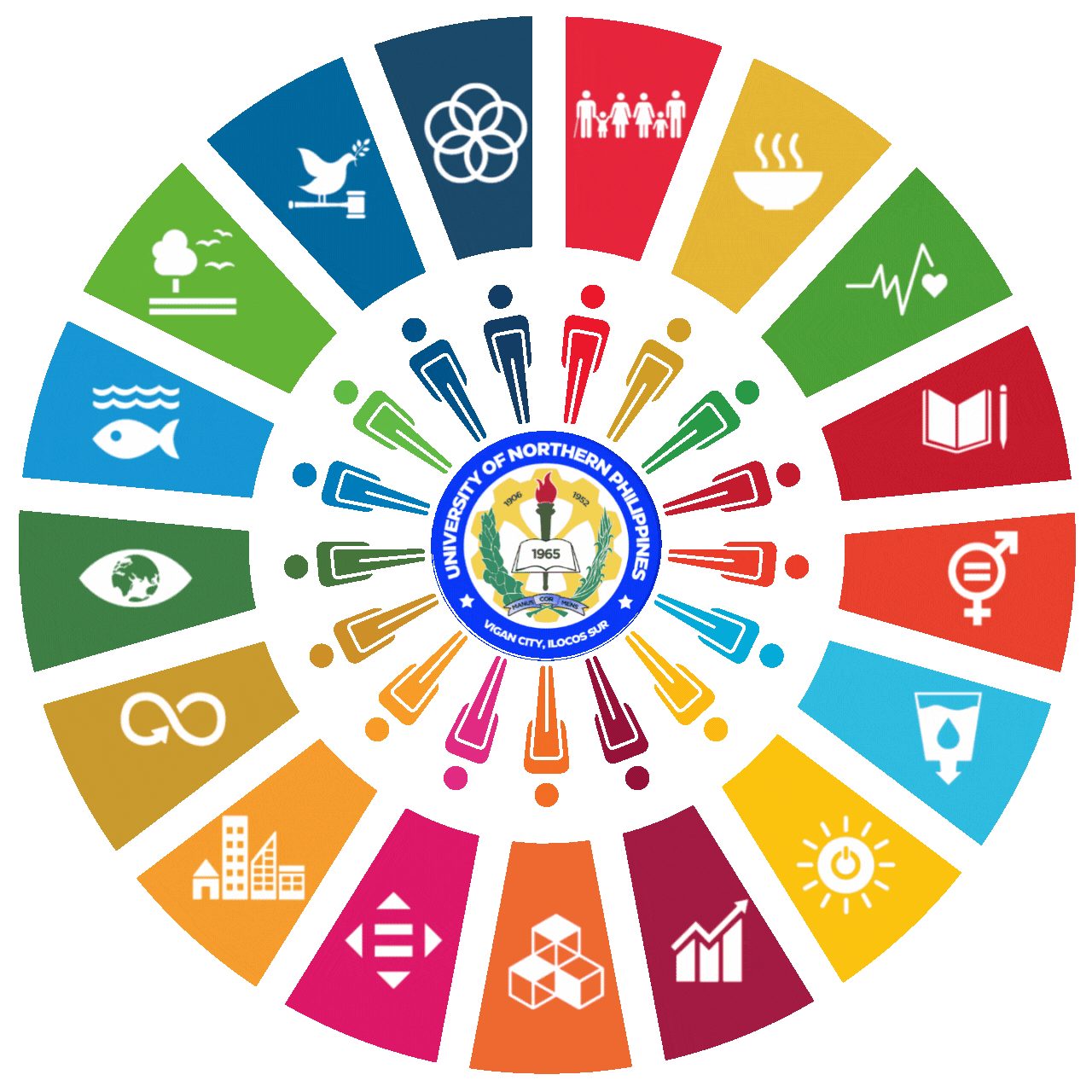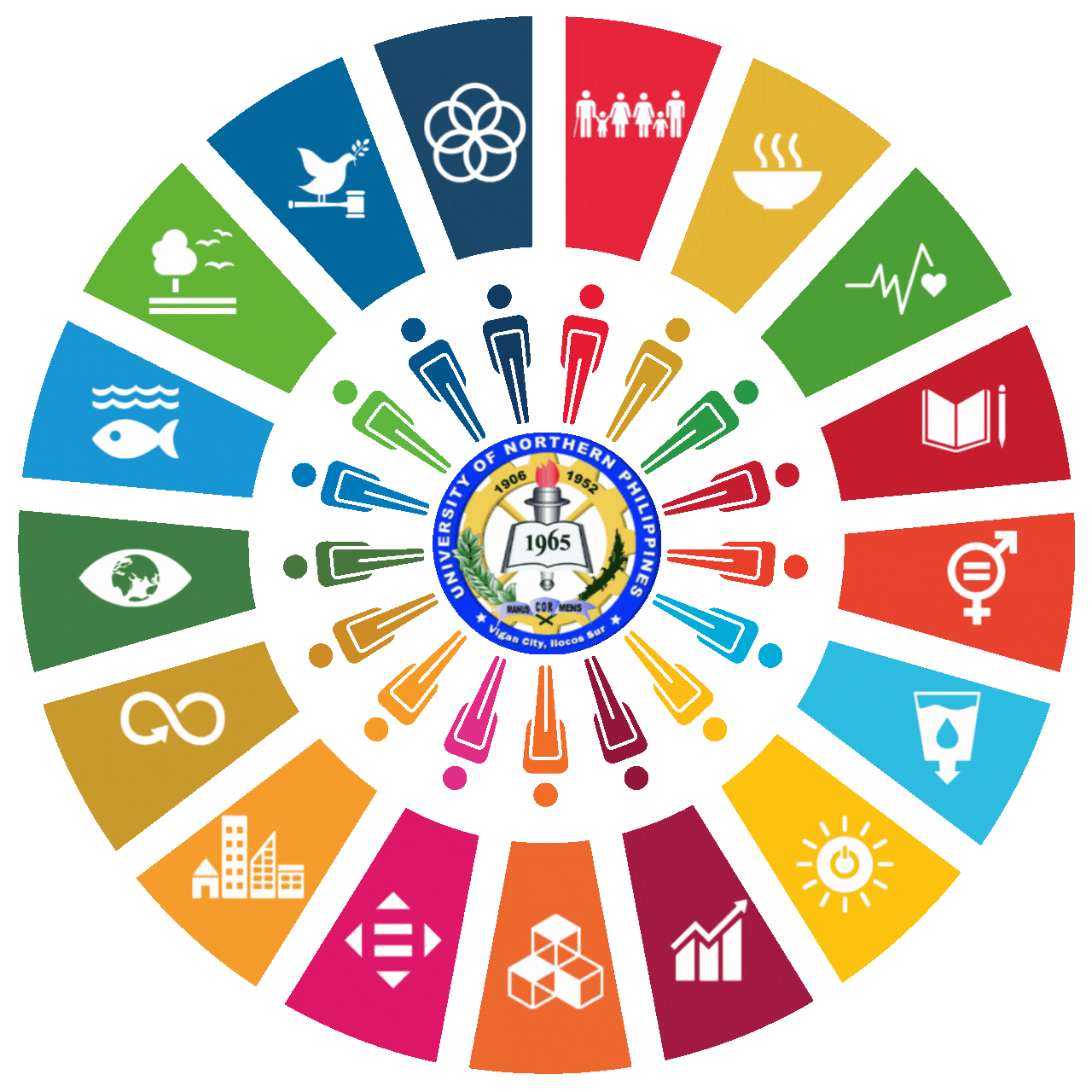

SDG 13 - CLIMATE ACTION
The University of Northern Philippines (UNP) demonstrates a strong commitment to advancing the Sustainable Development Goals (SDGs) through its comprehensive approach to education, research, and community engagement. As a leading institution of higher learning, UNP recognizes its crucial role in promoting sustainable development, showcasing how the University integrates sustainability into its core functions, and contributes to building a more equitable, and environmentally conscious society.
Climate Fiction for the Classroom through Ecocriticism and Collaborative Digital Text Annotation
Proponents: Agata Cristine E. Cabrera, Crissa Mae I. Agsalog, Ronnel C. Ibea, Ofelia E. Tara, Jolysa Rose A. Corpuz, Mark Louie Tabunan
Abstract
This study took a humanities approach to climate change education, focusing on climate fiction texts in the literature classroom, namely: Barakat Akinsiku’s “The God of the Sea,” Sigrid Marianne Gayangos’s “Galansiyang,” and Jules Hogan’s “Those They Left Behind” from Everything Change: An Anthology of Climate Fiction, Volume III (2021). This encompassed the Quarter 3, Week 7 literature competency in the DepEd Grade 10 curriculum context. In-depth discussion of the cli-fi texts was made possible through the crafting of a lesson exemplar, writing of discussion questions through an ecocritical lens, and using Collaborative Digital Text Annotation (CDTA) as an evaluative reading tool which engendered student responses to the text and interactions within the CDTA activity. Thematic analysis was used in interpreting the digital text annotations which revealed four different themes: drawing out story elements, connecting the text to the real world, performing evaluative reading, and expressing random reactions under which the students’ responses to the cli-fi texts were classified. The researchers recommend using online applications such as Google Docs as
digital annotation tools during collaborative classroom reading. Also, literature classroom facilitators should create a concrete reward system to encourage students’ enthusiasm during the CDTA activities and to achieve the collaborative aspect of the CDTA. Lastly, other reading strategies for evaluating cli-fi texts must be explored.
Keywords: climate change education, interdisciplinary literature instruction, technology-based learning, ecocriticism
Enhancing Swine Husbandry: The IoT-Integrated Hog Feeding Assistant
Proponents: Jezzer T. Tibreza, Fernandino S. Perilla
Abstract
IoT-Integrated Hog Feeding Assistant revolutionizes swine husbandry, offering hog raisers crucial insights into feed consumption and operational costs, thereby enhancing overall efficiency and comfort. This paper elucidates the system’s development process, methodology, and usability assessment. Employing the Rapid Application Development model ensured a swift and flexible creation of the Hog Feeding Assistant, guaranteeing the timely deployment of a fully functional system. Essential data for system design and features were acquired through document analysis and surveys. The system’s usability was systematically evaluated using the ISO 25010 software quality standard tool, assessing functional suitability, performance efficiency, compatibility, usability, reliability, security, and maintainability. This comprehensive evaluation provides a profound understanding of the system’s capabilities and user-friendliness. The Hog Feeding Assistant with IoT Integration is strongly recommended for hog raisers due to its remarkable efficiency, convenience, and exceptional usability. Seamlessly integrating into daily operations, the system not only streamlines feeding processes but also furnishes valuable insights, empowering more informed decision-making in swine husbandry.
Keywords: Swine husbandry, IoT integration, rapid application development, usability assessment, feed consumption optimization
Development of Non-Load Bearing Three-Core Stretcher Concrete Masonry Unit with Polyethylene Terephthalate Wastes
Proponents: Chavit G. Abalos, Krisha Mae Jemaima B. Cabe, Ej Alfred R. Manglal-lan, Gaylord A. Frando
Abstract
Persistent problems stem from factors such as the difficulty of waste recycling wherein plastics are substantial contributors having strong environmental impact. To mitigate this dilemma, reengineered plastics are emerging as reforms in solving solid waste management issues. This study aimed to investigate the effects of utilizing Polyethylene terephthalate (PET) as an admixture in a non-load-bearing concrete masonry unit. Moreover, it sought to limit the amount of environmental degradation and prevent ecological and environmental strains caused by plastic. This study used the experimental method which involved compressive strength testing, unit weight, and unit cost analysis. In addition to this, the properties of the materials were studied to arrive at the optimum percent composition to generate the highest efficiency. Five treatments were utilized including the control (0%), 1.5%, 2.0%, 2.5%, and 3.0% PET waste admixture. In the findings, both the control CMU and the 1.5% PET waste admixture have qualified on the standard specification, ASTM C129, for CMU compressive strength. The unit weight decreases as the amount of admixture increases. In terms of unit cost, the sample with the highest percentage of PET waste has the lowest unit cost but with the lowest compressive strength. However, between the control CMU and the 1.5% PET waste admixture, the latter has a lower unit cost. Therefore, it can be inferred that adapting the use of PET wastes as admixture at 1.5% showed the most competence proving to reduce plastic waste environmental issues while gaining higher possible profit when introduced into the commercial industry of construction supplies. For future studies, a Comparative Analysis of walls made with plain and PET waste concrete masonry units may be conducted to improve the application of the material.
Keywords: Polyethylene Terephthalate, Concrete Masonry Unit, Admixture
Biogas Generation from Vegetable Waste and Horse Dung through Improvised Anaerobic Digester
Proponents: Maria Angelica J. German, Rosaly P. Paiste, Crissa Mae D. Rafanan, Vincent P. Pilien
Abstract
Biogas significantly reduces the environment’s vast supply of animal manure and food waste, which causes nitrogen and water pollution. Biogas is a sustainable fuel created when microorganisms decompose organic matter, such as food or animal waste, without oxygen, which is known as anaerobic digestion. This study considered vegetable waste (VW) and horse dung as substrates in producing biogas. The study aims to generate biogas in 34 kg of mixed vegetable waste and horse dung into two designs of experiments with different proportions and study how these proportions affect the amount of biogas produced within the period of 10 and 13 days. This study employed an experimental research design wherein data were collected through surveys, timely observations, and primarily through experiments. After ten days, the first experiment produced yellow with a little blue, while the second experiment produced blue with a little yellow. Likewise, after 13 days, the mixed waste consisting of 30% each of VW and Horse manure was fed into the digester (experiment 1) and lasted 3.22 minutes. In contrast, the mixed waste, consisting of 20% VW and 40% Horse dung, was fed into the digester (experiment 2) for 7.22 minutes. Furthermore, both experiments produced blue with a little bit of yellow. On water temperature, experiments 1 and 2 were able to boil 200 ml of water from 3°C to 5.20°C and 6.10°C, respectively. These results signify the effectiveness and efficiency of the chosen substrate in producing biogas. It is recommended that future research in the same field shall consider economy and comparison between different substrates. Also, to measure biogas’s heat capacity and design a digester with catalyst and substrate mixer.
Keywords: Substrate, sustainable fuel, methanogenic bacteria, biogasification
Indigenous Knowledge Systems and Practices (IKSP) in Disaster Risk Reduction and Management of Secondary Schools in Indigenous Cultural Communities in Abra, Philippines
Proponents: Rhoda P. Asencio, Edelyn A. Cadorna
Abstract
Indigenous knowledge systems and practices (IKSP) are utilized by the Indigenous Cultural Communities (ICC) to mitigate the impact of disasters. This study determined the IKSPs in disaster risk reduction and management (DRRM) of the secondary schools in the selected indigenous communities in Abra, Philippines. It employed a mixed-method explanatory sequential research design. Data were gathered using surveys and interviews. Findings showed that the schools in the ICCs utilized their IKSPs to manage disasters along the four thematic areas of DRRM: prevention and mitigation, preparedness, response, recovery, and rehabilitation. IKSPs, as part of disaster management, include utilizing local plants, observing the behaviors of some animals and insects, observing the colors of the clouds, and performing rituals by the elders in the community. Furthermore, the result of the study revealed these IKSPs emerged to be essential in the prevention and mitigation, preparedness, response, recovery, and rehabilitation during disasters such as; “Alluyon,” “Ganap,” “Komon,” “Sagubay,” Ubaya,” ” Senga,” “Lapat System,” “Agamang,” “Bodong” and “Dap- Ay.”
Keywords: Indigenous Knowledge, Maeng, Lapat, Explanatory design, Abra.


















